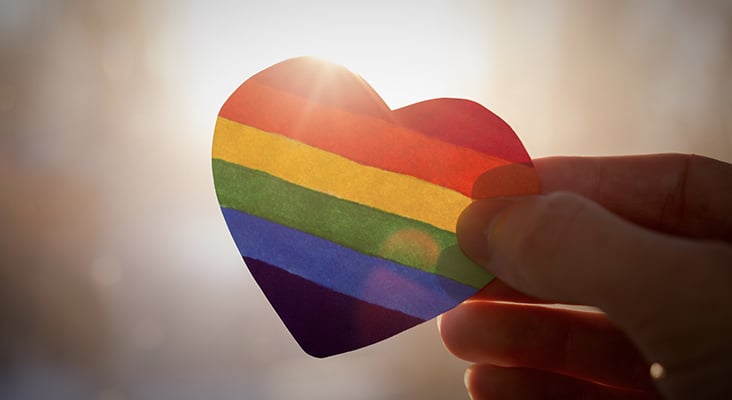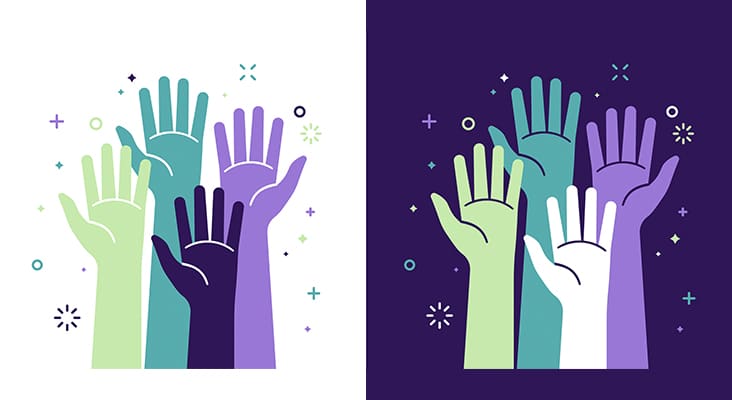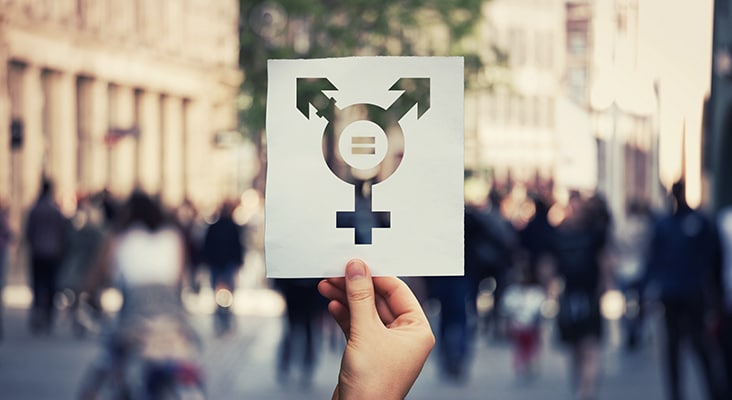Equitable Care for LGBTQ Patients
LGBTQ people have faced barriers to care. Today, offering culturally competent care is the standard.

The ability of dental hygienists to gain patients’ trust and confidence is dependent on their being culturally and linguistically competent. To achieve this, dental hygienists should continually develop their knowledge of culturally diverse groups in order to provide effective care. Diversity is no longer limited to race or ethnicity. Diversity is inclusive of mental ability, physical ability, age, race, ethnicity, gender identity, and sexual orientation. Lesbian, gay, bisexual, transgender (LGBT) health has gone relatively unaddressed in health professional education. While cultural competency is part of the dental hygiene curriculum, gender and sexual orientation are often missing. Dental hygienists need to develop the skills necessary to self-assess their intercultural communications in order to provide adequate care to all populations, including the LGBT community.
This information is from the article “Caring for the LGBT Community” by Jasmin Haley, RDH, BSDH, CDA.
Photo Credit: iluhanos / iStock / Getty Images Plus

Barriers to Care
There is a long history of discrimination and lack of awareness regarding the health needs of the LGBT community. This population has endured societal stigmatization, discrimination, and denial of civil rights. Until 1973, homosexuality was listed as a disorder in the American Psychiatric Association’s Diagnostic and Statistical Manual of Mental Disorders, and transgender identity remains listed as such. The inclusion of LGBT as a mental disorder contributed to a history of inhumane treatment, administration of electroshock therapy and chemical castration, and increased violence and hate crimes, particularly toward transwomen of color.
This information is from the article “Caring for the LGBT Community” by Jasmin Haley, RDH, BSDH, CDA.
Photo Credit: kate_sept2004 / E+

Factors to Consider
Multiple factors contribute to the lack of adequate access to care for the LGBT community. Many are of low socioeconomic status and cannot afford the cost of health care services. Others are unemployed, underemployed, and/or not provided with health or dental insurance. Barriers to health care may inhibit LGBT individuals from trusting health care providers. Frequent postponement of medical care when sick or injured has been reported in the LGBT community. Research has shown that the LGBT community, especially transgender individuals, encounters more physical assaults, loneliness, poor mental health, and increased lifetime suicide attempts than their non-LGBT peers. The complexity of disparities further increases when an individual is a member of multiple minority groups. For example, an LGBT person who is also part of a racial minority may be only half or a third as likely to access care compared with other LGBT individuals.
This information is from the article “Caring for the LGBT Community” by Jasmin Haley, RDH, BSDH, CDA.
Photo Credit: Roman Didkivskyi / iStock / Getty Images Plus

Cultural Identity
Dental hygienists should assess their cultural identity before attempting competency within another culture. Understanding the origin of their own culture, values, and beliefs will aid in understanding the needs of the LGBT community. Oral health professionals should reflect on their communication styles and govern their patient interaction with these four principles: open communication, trust, confidentiality, and involvement. This is in alignment with the American Dental Hygienists’ Association Code of Ethics and Values, which stipulates that dental hygienists are bound by the values of beneficence, nonmaleficence, confidentiality, justice, and fairness.
This information is from the article “Caring for the LGBT Community” by Jasmin Haley, RDH, BSDH, CDA.
Photo Credit: filo / DigitalVision Vectors

Language Is Important
Becoming familiar with common terminology and language used within the LGBT community is important to providing culturally competent care. Currently, the most inclusive acronym for this community is LGBTQQIIAA2S (lesbian, gay, bisexual, transgender, queer, questioning, intersex, interested, asexual, ally, two spirit). For the workplace, LGBT is an accepted term. A clear distinction exists between gender identity and sexual orientation. The terms are used independently of one other. Regardless of cultural background, all individuals have a gender identity, sexual orientation, and gender expression. Oral health professionals should become familiar with common terminology and proper use of preferred pronouns. When identifying a patient’s preferred pronoun, oral health professionals must keep in mind that some patients prefer to use nongender conforming pronouns such as “they,” “ze,” or “hir.”
This information is from the article “Caring for the LGBT Community” by Jasmin Haley, RDH, BSDH, CDA.
Photo Credit: fizkes / iStock / Getty Images Plus

Transgender Patients
Oral health professionals need to recognize and be culturally sensitive to transgender individuals who are transitioning. This is not always an easy task, as curiosity is a natural response. However, clinicians must be respectful at all times. While inquiring whether a transgender patient has undergone surgery is not appropriate, asking how identifying as a transgender person has impacted his or her life is relevant. Taking the time to understand the patient as a whole person may provide opportunities to gain cultural competency while aiding in communication.
This information is from the article “Caring for the LGBT Community” by Jasmin Haley, RDH, BSDH, CDA.
Photo Credit: Bulat Silvia / iStock / Getty Images Plus

Gender Identity
When communicating with a transgender person, the appropriate use of pronouns is important. Gender can be categorized in two parts: identity and expression. Gender identity is the internal image of a person that may not necessarily match his or her physical nature. When a person’s self-image does not match his or her gender at birth, this individual is considered transgender. A small group of individuals identify themselves as bigender, gender fluid, or agender. Gender expression is how a person decides to express outward appearance. Gender expression can pose a challenge for oral health professionals when determining what pronoun is appropriate. For example, a cisgender (individual whose gender identity corresponds to his or her sex at birth) woman may prefer to wear a suit and tie.
This information is from the article “Caring for the LGBT Community” by Jasmin Haley, RDH, BSDH, CDA.
Photo Credit: Iuliia Kanivets / iStock / Getty Images Plus

Appropriate Communication
All patients should be treated with respect and courtesy. It is vital that oral health professionals be comfortable asking patients for their preferences regarding communication. Clinicians should speak in an encouraging and culturally appropriate manner. Patients who reveal their identities should never be “outed” to others. The administrative staff is the first point of contact for patients entering a clinical practice. Staff should be trained to interact with a diverse population. Diversity training should include LGBT health issues. All staff should be educated in cultural competency, and staff diversity needs to be encouraged. The practice’s policy and procedures handbook must include nondiscrimination policies and procedures in the event a violation is suspected. Practices should also have a comprehensive resource and referral list of professionals who are trained in cultural competency.

